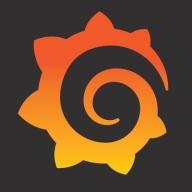

Elastic Observability and Grafana Loki compete in the monitoring and log management category. Grafana Loki appears to have the upper hand due to its superior features and efficient performance, although Elastic is well-regarded for its pricing and support.
Features:Elastic Observability offers comprehensive data integration, scalability, and a range of functionalities tailored for enterprise environments. Grafana Loki is noted for its simplicity, efficient log data management, and user-friendly interface, making it ideal for quick deployments and performance-focused users.
Room for Improvement:Elastic Observability could refine its search functionalities, ease configuration complexity, and streamline user interfaces. Grafana Loki users seek more advanced analytics, stronger integrations with other tools, and enhanced query capabilities.
Ease of Deployment and Customer Service:Elastic Observability has a more intricate deployment process supported by strong customer service, aiding user adoption. Grafana Loki offers straightforward deployment, though customer service experiences vary and indicate areas for improvement.
Pricing and ROI:Elastic Observability provides competitive pricing and a good return on investment, with considerations for initial setup costs. Grafana Loki, though seen as costly upfront by some, delivers efficient performance leading to substantial long-term savings.
| Product | Market Share (%) |
|---|---|
| Grafana Loki | 7.9% |
| Elastic Observability | 1.3% |
| Other | 90.8% |


| Company Size | Count |
|---|---|
| Small Business | 8 |
| Midsize Enterprise | 4 |
| Large Enterprise | 16 |
| Company Size | Count |
|---|---|
| Small Business | 7 |
| Midsize Enterprise | 8 |
| Large Enterprise | 3 |
Elastic Observability offers a comprehensive suite for log analytics, application performance monitoring, and machine learning. It integrates seamlessly with platforms like Teams and Slack, enhancing data visualization and scalability for real-time insights.
Elastic Observability is designed to support production environments with features like logging, data collection, and infrastructure tracking. Centralized logging and powerful search functionalities make incident response and performance tracking efficient. Elastic APM and Kibana facilitate detailed data visualization, promoting rapid troubleshooting and effective system performance analysis. Integrated services and extensive connectivity options enhance its role in business and technical decision-making by providing actionable data insights.
What are the most important features of Elastic Observability?Elastic Observability is employed across industries for critical operations, such as in finance for transaction monitoring, in healthcare for secure data management, and in technology for optimizing application performance. Its data-driven approach aids efficient event tracing, supporting diverse industry requirements.
Grafana Loki is a powerful log aggregation and analysis tool designed for cloud-native environments. Its primary use case is to collect, store, and search logs efficiently, enabling organizations to gain valuable insights from their log data.
The most valuable functionality of Loki is its ability to scale horizontally, making it suitable for high-volume log data. It achieves this by utilizing a unique indexing approach called "Promtail," which efficiently indexes logs and allows for fast searching and filtering. Loki also supports log streaming in real-time, ensuring that organizations can monitor and analyze logs as they are generated.
By centralizing logs in a single location, Loki simplifies log management and troubleshooting processes. It provides a unified view of logs from various sources, making it easier to identify and resolve issues quickly. With its powerful query language, organizations can extract meaningful information from logs, enabling them to gain insights into system performance, identify anomalies, and detect potential security threats.
Loki's integration with Grafana, a popular open-source visualization tool, allows users to create rich dashboards and visualizations based on log data. This combination enhances the observability of systems and applications, enabling organizations to make data-driven decisions and improve overall operational efficiency.
We monitor all Log Management reviews to prevent fraudulent reviews and keep review quality high. We do not post reviews by company employees or direct competitors. We validate each review for authenticity via cross-reference with LinkedIn, and personal follow-up with the reviewer when necessary.